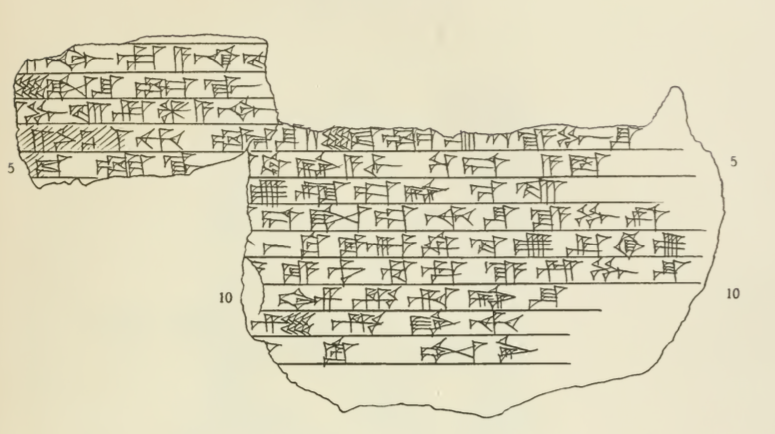Aššur-bēl-nišēšu
According to the Assyrian King List [/riao/KingLists/AssyrianKingList/AssyrianKingList/index.html] (AKL), Aššur-bēl-nišēšu, son of Aššur-nārārī II, exercised the kingship of Assyria for nine years (near the end of the 15th century BCE). According to the Synchronistic History, Aššur-bēl-nišēšu concluded a treaty with Kara-indaš, a Kassite king of Babylon (Grayson 2000:158-159).
Bibliography
Grayson, A.K. Assyrian and Babylonian Chronicles, Winona Lake. Eisenbrauns, 2000.
Browse the RIA 1 Corpus [/riao/ria1/pager/]
1

Ist A 03361 + Ist A 03362 (Ass 01424 + Ass 01426), KAH 1 no. 58
Several clay cones now in Berlin (Vorderasiatisches Museum) and Istanbul (Eski Șark Eserleri Müzesi of the Arkeoloji Müzeleri) are inscribed with a text of Aššur-bēl-nišēšu from Aššur. The inscription commemorates the construction of a new wall, which this ruler had added to the "great wall" of the New City, a structure built by Puzur-Aššur III and recorded on similar clay cones (see, this ruler's text no. 6). In both inscriptions, the geographical indication of the wall is indicated: "from the great wall of Inner City as far as the whole River (Tigris)."
Access the composite text [/riao/ria1/Q005706/] of Aššur-bēl-nišēšu 1.
Bibliography
1001
Parts of the last nine lines of an inscription are preserved on on a clay cone fragment found at Aššur. The piece, which is now in the Vorderasiatisches Museum (Berlin), has tentatively been assigned to Aššur-bēl-nišēšu.
Access the composite text [/riao/ria1/Q005707/] of Aššur-bēl-nišēšu 1001.
Bibliography
Jamie Novotny & Yehonatan Hershkovitz
Jamie Novotny & Yehonatan Hershkovitz, 'Aššur-bēl-nišēšu', RIA 1: Inscriptions from the Origins of Assyria to Arik-dīn-ili, The RIA Project, 2024 [http://oracc.org/OldAssyrianPeriod/Mittanianhegemony/Ashur-bel-nisheshu/]